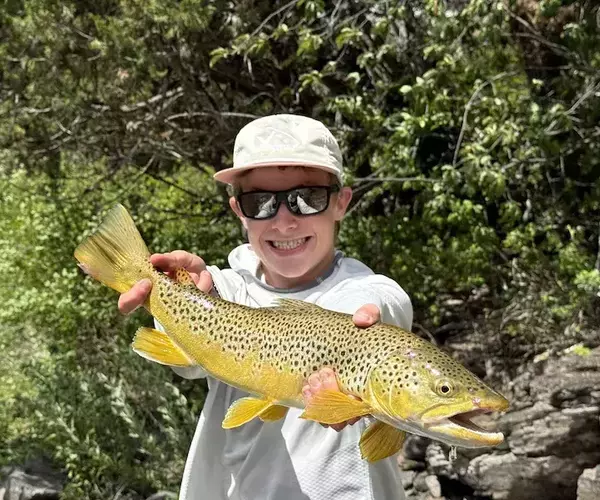
Blackfoot River
The Blackfoot River is among the most famous Montana rivers. It flows west for 130 miles through the central-western part of the state to its confluence with the Clark Fork River near Missoula. This highly regarded trout stream became famous in the early 1990s with the movie A River Runs Through It.
The river flows through a stunning landscape accented by forested banks, craggy canyons, and rolling hills. Anglers and recreational floaters enjoy endless recreational opportunities along the Blackfoot River Corridor.
Fly fishing this legendary freestone river is a bucket list experience for serious anglers fishing in Montana. Prolific and diverse summer hatches bring trout to the surface throughout the day, making the Big Blackfoot among the best fly fishing in Montana for the dry fly angler.
Native Westslope Cutthroat, rainbow, brown, and brook trout feed eagerly on top from mid-June through mid-July. Bull Trout are present throughout the river and, although illegal to purposely target, are frequent by-catches when streamer fly fishing for the larger brown and rainbow trout.
Always Reliable and a Great Time
"We've fished with Fins and Feathers over several seasons and different rivers and always had a great time. The guides have been on time and ready to go..."
Blackfoot River Sections
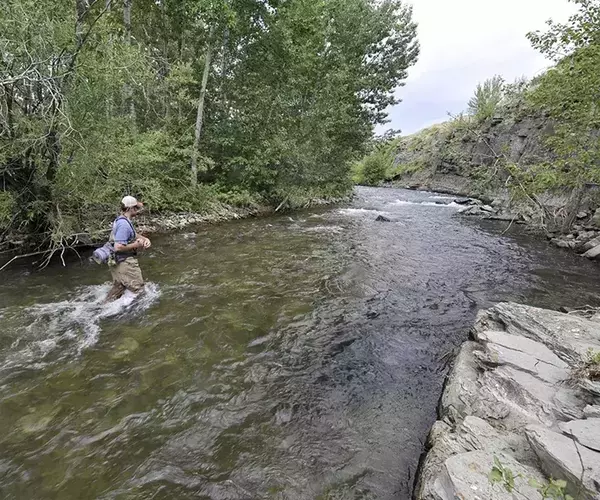
Headwaters to River Junction
The river gradually increases in size from a tiny headwaters stream to a medium-sized river as it flows between Lincoln and Ovando, Montana.
Above Lincoln, the river is very small and frequently runs dry in the fall and winter months. Trout numbers are very low, but anglers can expect to encounter a few small trout during the early summer season while wade-fishing.
Small tributaries feed the river over this nearly 75-mile stretch, improving the habitat to support a more numerous and diverse wild trout fishery. Brown trout numbers are low between Lincoln and the HWY 141 bridge but are the most common species in this wade-angler-friendly stretch.
Rainbow and native westslope cutthroat become more prevalent further downstream, near the river’s confluence with the North Fork Blackfoot River. Although it is possible to float upstream of the River Junction fishing access site, the river is rather small and lacks an abundance of quality holding water to support large trout populations.
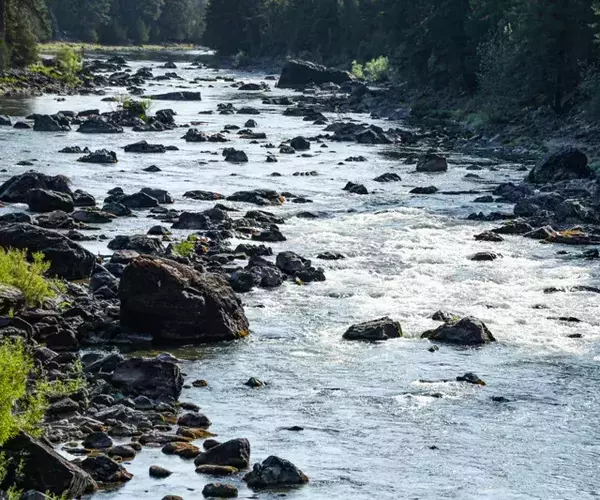
River Junction to Clearwater Crossing
Blackfoot River fishing is at its best throughout this legendary stretch of blue-ribbon trout water downstream of River Junction. Trout populations increase along with the volume of water and the river becomes more suitable for anglers fishing from driftboats and rafts.
Myriad types of holding water can be found as anglers approach the top of the renowned Box Canyon. Cutthroat and rainbow trout readily rise from slots along the riverbed ledges, riffles, and bankside seams.
The mouths of tributaries bring cold water into the river during the hottest parts of summer, making them ideal locations to target while floating.
The river widens downstream of the Box Canyon, becoming shallow in the straightaway sections in between the deep corner pools. Small dry flies, accurate presentations, and fine leaders are critical to angling success here during the late summer when streamflow is low.
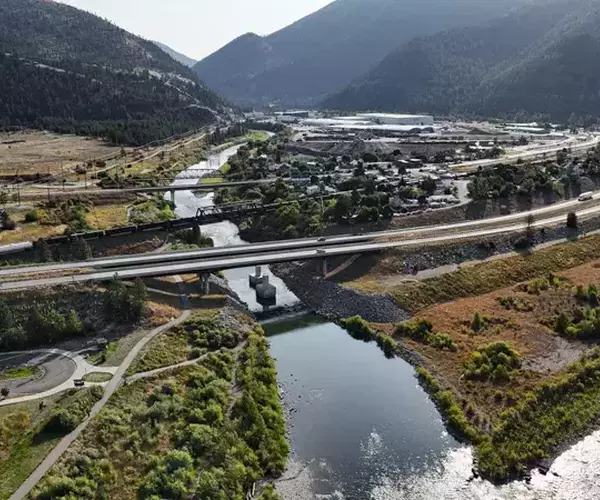
Clearwater Crossing to Clark Fork River
Recreational traffic increases along the Blackfoot River sections closest to Missoula. Weekends and afternoons are notoriously busy with rafters, tubers, and kayakers through the lower river during the summer and early fall.
Trout numbers remain excellent, along with the scenery and holding water. Long, shallow glides interspersed with deep holes along canyon walls create a diverse angling experience for both wade and float fishermen.
Spring and early summer water conditions present ideal Blackfoot River fly fishing conditions for the experienced streamer angler.
The character of the river changes throughout the season, and these lower sections can be quite challenging for inexperienced oarsmen to row, especially later in the season when the flow is low.
Fishing Conditions Through the Seasons
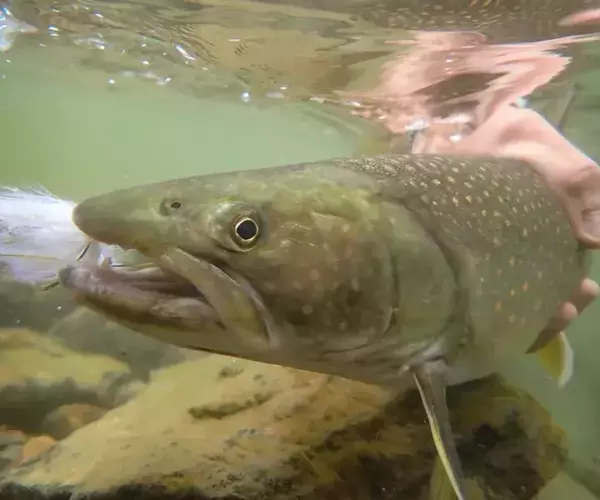
Spring
Early season dry fly fishing is the name of the game for anglers fishing the Blackfoot River – if the weather is warm and mild. The dramatic elevation change and canyon sections of the river hold onto winter a bit longer in this Montana river drainage.
Blue-winged olive, skwala, March Browns, and midge hatches create some exceptional dry fly fishing opportunities during the pre-runoff weeks in March and April. However, warm weather often brings sudden flow increases this time of year, making it difficult to plan an early-season Montana fly fishing trip to the Blackfoot. Expect runoff conditions throughout May and early June.
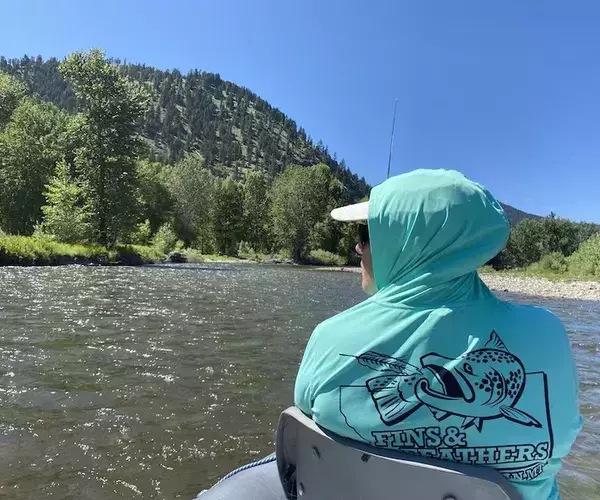
Summer
As the water drops and clears with the waning runoff season in June, the river comes alive with stonefly hatches. Salmonflies and golden stone hatches here in June make for a week or two of the best fly fishing in Montana – especially for skilled dry fly anglers.
Mayflies, caddis, yellow sallies keep the trout looking up throughout July. Spruce moth and terrestrial season closely follow, bringing reliable fishing as streamflow stabilizes before the summer heat settles in. Long summer days and low summer flow begin to impact fishing by late July with the most productive action being limited to the morning hours through August.
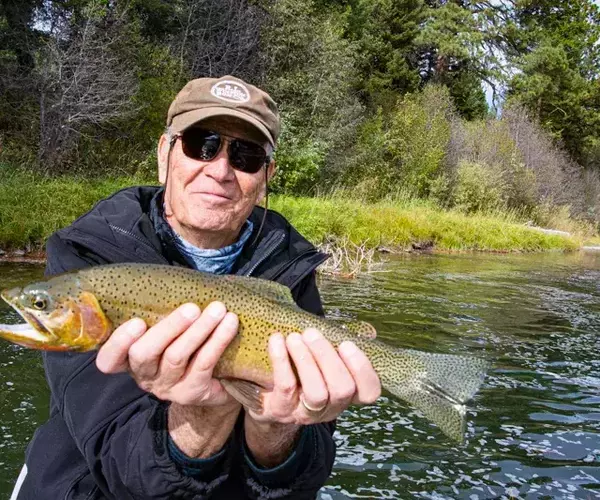
Fall
The days become noticeably shorter by September, and the water temperatures cool down considerably with the arrival of fall. The fishing improves as trico hatches give way to blue-winged olive mayflies and much-needed rainfall.
The landscape's changing colors are in full display through October and make for unforgettable days floating and fishing the Big Blackfoot River during fall. Brown trout become increasingly active and attract serious anglers from across Montana.
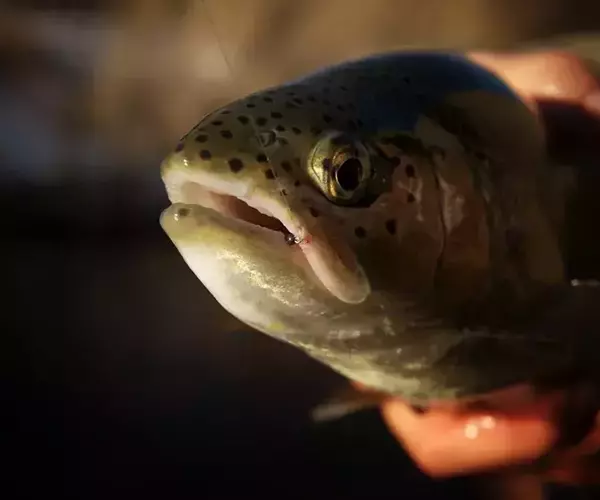
Winter
The narrow canyons and high elevation origins make for long, cold winter days for anglers fishing the Blackfoot. Sparse hatches and frozen river sections keep the trout holding in deep, slow water.
Midge hatches on warm February days can quickly cure cabin fever for Missoula anglers, but these windows of opportunity are short-lived.
Blackfoot river fishing in the winter is for the wade-angler looking for a few hours of solitude and methodical angling.
Blackfoot River Fly Box Essentials
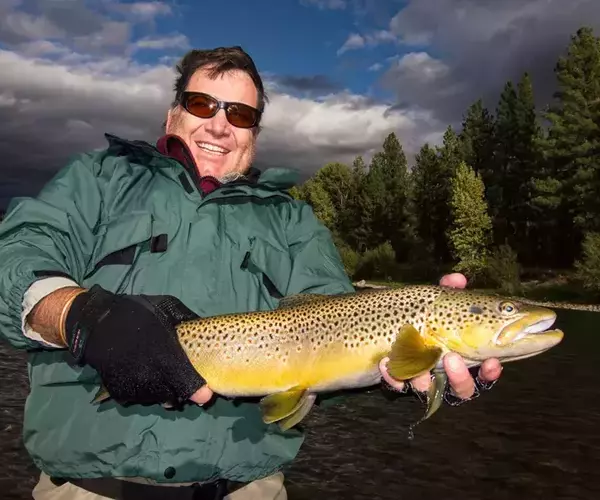
Blackfoot River Fishing Trips
The Blackfoot River is conveniently located for anglers fishing out of Missoula or Craig, Montana. Our Montana fishing guides frequent the Blackfoot during prime weeks in June and mid-September.
June brings dropping, clearing water conditions well-suited to experienced dry streamer fly fishing. The casting is “fast and furious” at times as we expertly maneuver our drift boats through the canyons and rock gardens in high water. A Blackfoot River fishing trip adds a nice variety to fly fishing vacations for our guests fishing the Missouri River on multi-day itineraries.
A few of our guides slip away from Bozeman in September to guide fly fishing trips near Missoula. The Blackfoot, along with the Clark Fork and Bitterroot, offer a nice change of pace this time of year. Custom fly fishing itineraries on these western Montana Rivers are available to our returning, experienced angler clients.
With over two decades of experience as a Montana fly fishing outfitter, we consider Blackfoot River trips a “must see” fly fishing experience during prime conditions. Contact us for help with planning a Montana fly fishing vacation that includes guided fly fishing the Blackfoot River.
Related Articles From The Montana Fly Fishing Blog

Category: Bozeman Fly Fishing Trip Planning, News & Updates
When is the Best Time to Fly Fish in Montana?
Post Date: 03/06/2024
Montana fly fishing is among the best wild trout fly fishing destinations in the world. Timing your fly fishing vacation around the best times of the year is critical to...
Read Article
Category: Bozeman Fly Fishing Trip Planning, Tips on Flyfishing Montana Rivers
Where is the Best Fly Fishing in Montana
Post Date: 03/16/2024
Trout anglers have no shortage of great places to fish. The state of Montana alone boasts enough trout water to keep you busy for several lifetimes. What’s the best trout...
Read Article






































